On the frontlines is our monthly newsletter section covering the activities of BirdLife Malta’s conservation, policy, nature reserve (Salina, Simar, Għadira and Foresta 2000), seabird and public engagement teams, together with an update about rare and scarce bird species observed.

Call for Raptor Camp Volunteers
Autumn migration is approaching! As the birds that nested across continental Europe begin their journey back to Africa for the winter, Malta becomes a vital stopover along their route.
Unfortunately, their journey is still threatened by the illegal hunting activity on the islands. The autumn hunting season – running from September to January – overlaps with the peak migration of many protected bird species.
To counter this, our Conservation Team is once again running the Raptor Camp, a dedicated initiative to monitor and report illegalities during this critical time. From 8th to 26th September, volunteers will patrol key areas of Malta and Gozo, helping us protect these vulnerable birds and alert the Environmental Protection Unit when necessary.
We’re looking for passionate volunteers to join us in the field!
We especially welcome experienced drivers, bird enthusiasts with strong ID skills, and those who enjoy spending time outdoors observing wildlife.
If you’re ready to make a real impact in the fight against illegal hunting, contact our Conservation Coordinator, Alice Tribe, at [email protected].
Rehabilitation and Releases
This month, we received numerous reports of stranded Yelkouan Shearwaters. Thanks to our efforts, we successfully rehabilitated and released a total of seven young individuals back to sea. Almost all of them were suffering from severe dehydration and were significantly underweight. Additionally, a few had feathers contaminated with an unidentified substance, which severely compromised their waterproofing.
Rehabilitating pelagic birds is a complex and delicate process, and we are proud of the results we have achieved in recent years. We remain committed to expanding our expertise and strengthening collaborations with other organisations around the world. This month, we also rescued and rehabilitated a Scopoli’s Shearwater and three Yellow-legged Gulls.
We are proud to report the successful release of two European Honey-buzzards and a Red-footed Falcon in Sicily, near Mount Etna. After being illegally shot during the open hunting season, they had fractured wings and severe feather damage caused by lead pellets, which made them unable to fly. Thanks to intensive care and rehabilitation, they all made a full recovery and were released into a suitable and – most importantly – safe habitat, giving them enough time to regain strength and prepare for their autumn migration.
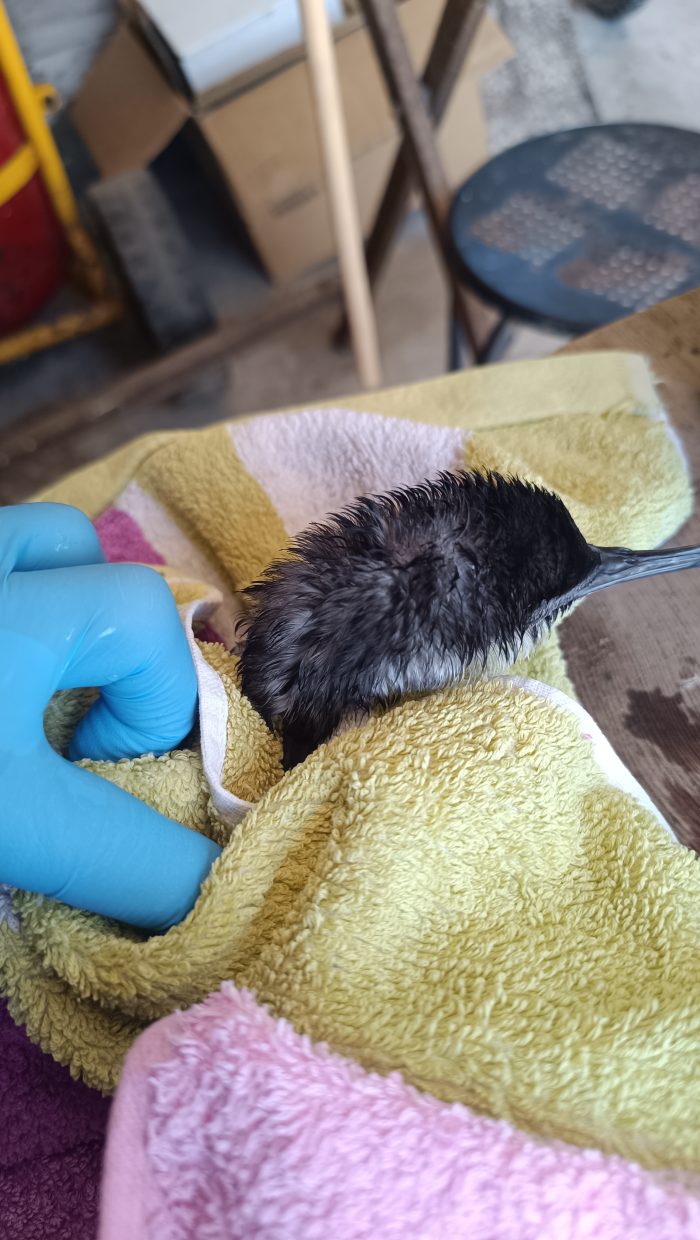
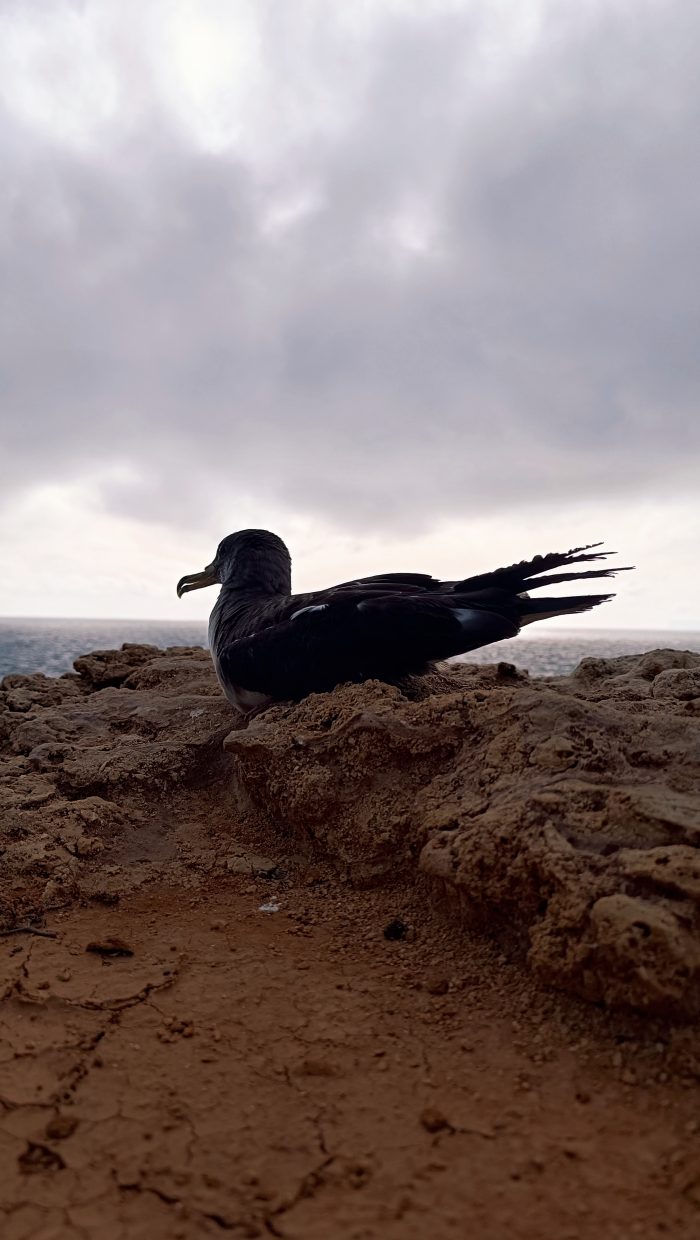
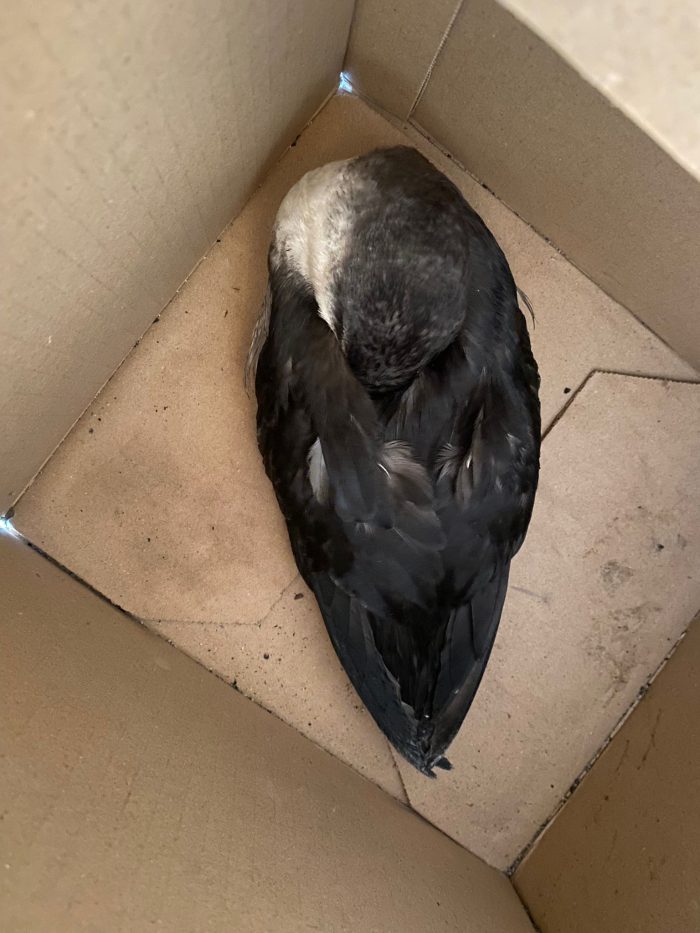

Shearwater Rescues So Far…
Throughout the month, BirdLife Malta responded to multiple reports of stranded Yelkouan Shearwaters found across the Maltese Islands. These young seabirds, having just left their nests for the first time, are vulnerable to light pollution, exhaustion, and disorientation during their maiden journey out to sea.
Thanks to alerts and support from members of the public, BirdLife Malta collected 16 stranded Yelkouan Shearwaters. Most of them were admitted in our rehabilitation centre. Here they received the care and recovery time needed to regain strength. The majority have then been successfully released back into their natural habitat.
Each rescue and release is a reminder of the challenges these seabirds face and the vital role the public plays in their conservation. These young fledglings will spend years at sea before returning to their colonies when they are ready to breed, starting the cycle again.
We thank everyone who reported sightings and helped make these recoveries possible.
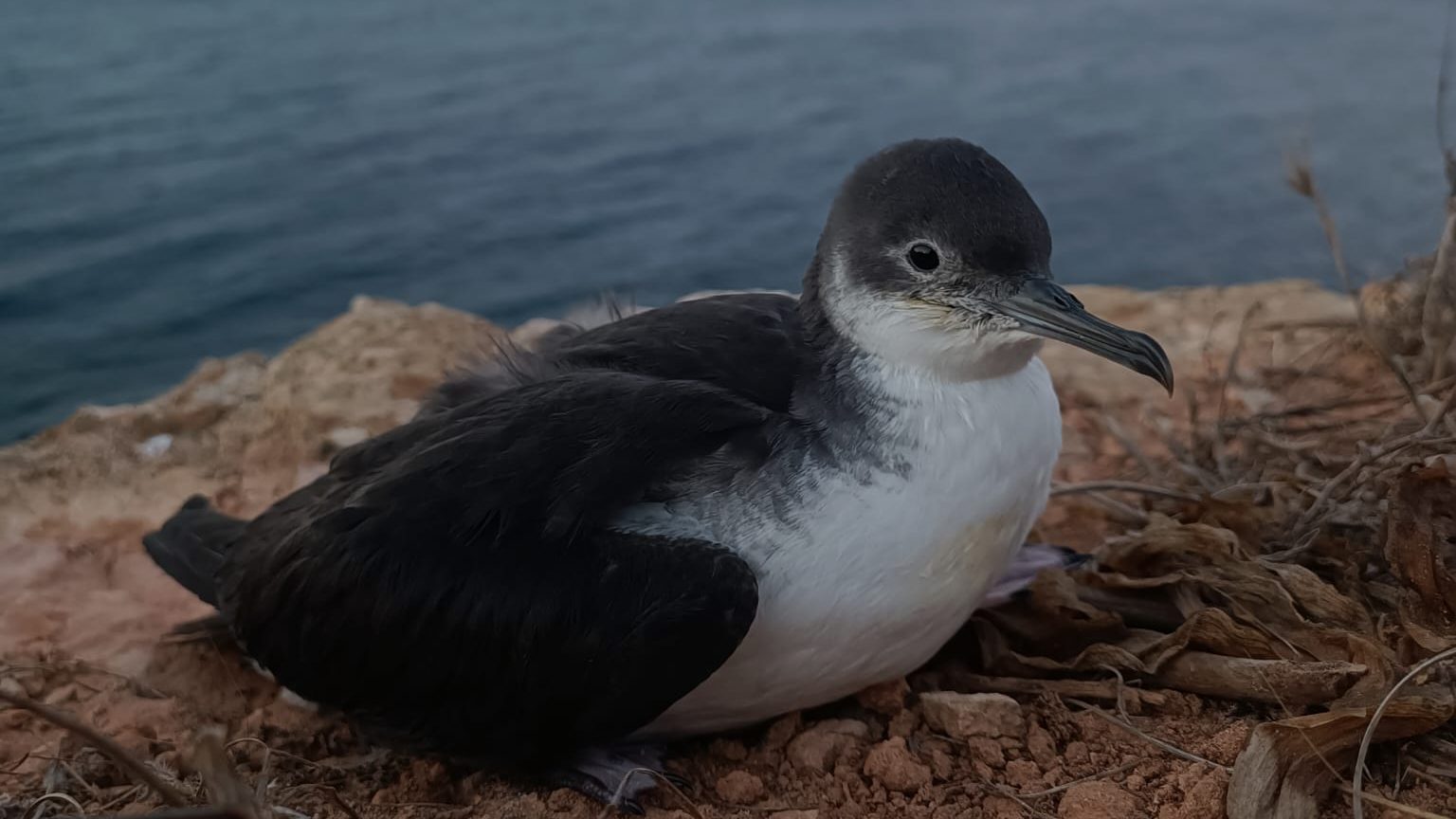
Shearwater Boat Trips: A Glimpse into Malta’s Wild Coastal Life
This summer, BirdLife Malta’s Shearwater Boat Trips once again gave nature lovers the chance to witness the spectacular sight of Scopoli’s Shearwaters gathering at sea before returning to their cliffside nests.
This year’s trips brought added excitement with unexpected wildlife encounters! On several evenings, pods of dolphins were seen leaping from the water, offering a breath-taking experience for those on board. These moments were a powerful reminder of the rich marine life found just off our coasts.
As always, our team shared insights into the life of the seabirds that breed in the Maltese islands – including Yelkouan Shearwaters and Scopoli’s Shearwaters – and on the conservation challenges they face. Several media houses joined us as well, providing coverage of the event. You can check an article from Newsbook about the event here.
There are two more trips planned for August, wrapping up this year’s season. We can’t wait to see what these events will have in store!
Collaborating with Fishers: Final Push for Data Collection
As part of the LIFE PanPuffinus! project, BirdLife Malta is continuing its close collaboration with longline fishers as the project nears its end. This final stretch is crucial for collecting data through logbooks and onboard observations. The information gathered will be analysed throughout August, helping us evaluate the effectiveness of mitigation measures trialled during the last few years. Want to find out more? Check out the LIFE PanPuffinus! project.
Follow our LIFE PanPuffinus! project on our website and social media!

BirdLife Malta’s Recommendations on Malta’s National Nature Restoration Plan
BirdLife Malta took part in ERA’s public consultation on Malta’s upcoming national Nature Restoration Plan (NRP). This is an exciting step towards giving our natural habitats the care they deserve. The plan aims to set restoration targets across marine, land, urban, and agricultural ecosystems – not just within Natura 2000 sites. Many of these areas are still crying out for proper management and restoration, so this is a much-needed opportunity.
We encouraged ERA to aim high but also to keep the plan realistic, in order to truly deliver on the EU’s Nature Restoration Regulations. For this to happen, it’s not enough to rely only on existing data. Collaboration will be key – with Ambjent Malta, the University of Malta, and environmental NGOs all having valuable expertise to contribute.
We see the NRP as a national opportunity to restore nature on a meaningful scale. For it to succeed, bold action is needed – including removing major threats to habitats. This could mean establishing No-Take Zones for fisheries, relocating bunkering activities away from Natura 2000 sites, reducing pesticide use, and tackling issues like overfishing, anchoring, light and noise pollution.
Equally important is public understanding and support. Alongside the NRP, a strong communication plan is needed to explain its aims, benefits, and protective measures – such as limiting visitor numbers or channelling activities to specific areas. The more people understand why these measures are important, the more likely they are to support them. We highlighted the importance of providing enough resources – financial, technical, and human – to make the NRP a success as well.
While still prioritizing protected areas, we also urged the inclusion of ecological corridors outside Natura 2000 sites, as they help keep these habitats healthy. Our recommendations focused on restoring Natura 2000 sites that urgently need attention, as well as protecting important ecological corridors beyond these areas. We highlighted key issues such as tackling invasive species, improving waste management, reducing light and noise pollution, and strengthening enforcement in sensitive habitats.
If implemented well, this plan could be a turning point for Malta’s natural heritage – and we’re excited to contribute to shaping it!


Salina Nature Reserve
Sightings
Waders started to arrive in our reserve from their northern breeding grounds – some from as far as the Arctic Circle! We were able to spot our first Dunlin of the season, still in its breeding plumage. We also recorded several Common Greenshanks and Redshanks, as well as daily arrivals of Wood Sandpipers, with the occasional Green Sandpiper stopping by.
Excitingly, a pair of Little Ringed Plovers successfully incubated and hatched their chicks for the first time at the reserve. We remain optimistic that the chicks will fledge successfully. Over the years, Salina has become a thriving habitat that offers a rich variety of insects and larvae, making it an ideal spot for ground-nesting birds. We look to the future with great anticipation!
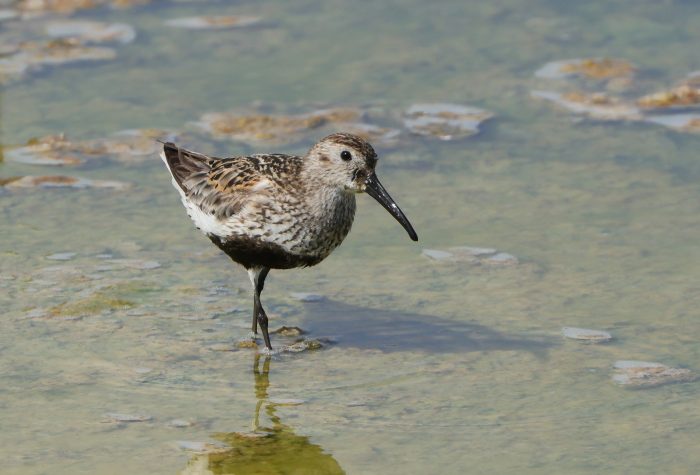

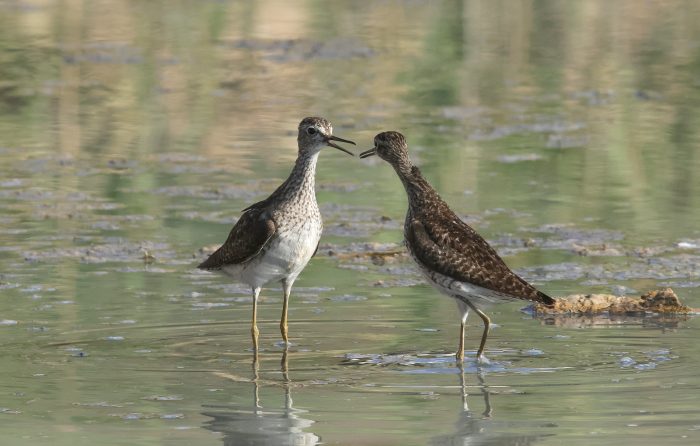
Works
At the end of July, our reserve proudly hosted the second edition of Salina Salt Festival, welcoming more than 900 visitors!
The festival brought together people of all ages to celebrate the unique heritage of our saltpans and its surrounding natural beauty. From guided tours of the saltpans and the Salt Museum to interactive workshops for children and adults, the event was packed with engaging activities. Visitors also enjoyed virtual reality experiences, educational stands from local NGOs, and nature-themed games and crafts. We’re incredibly grateful to everyone who participated and contributed to making this event a meaningful and memorable experience!
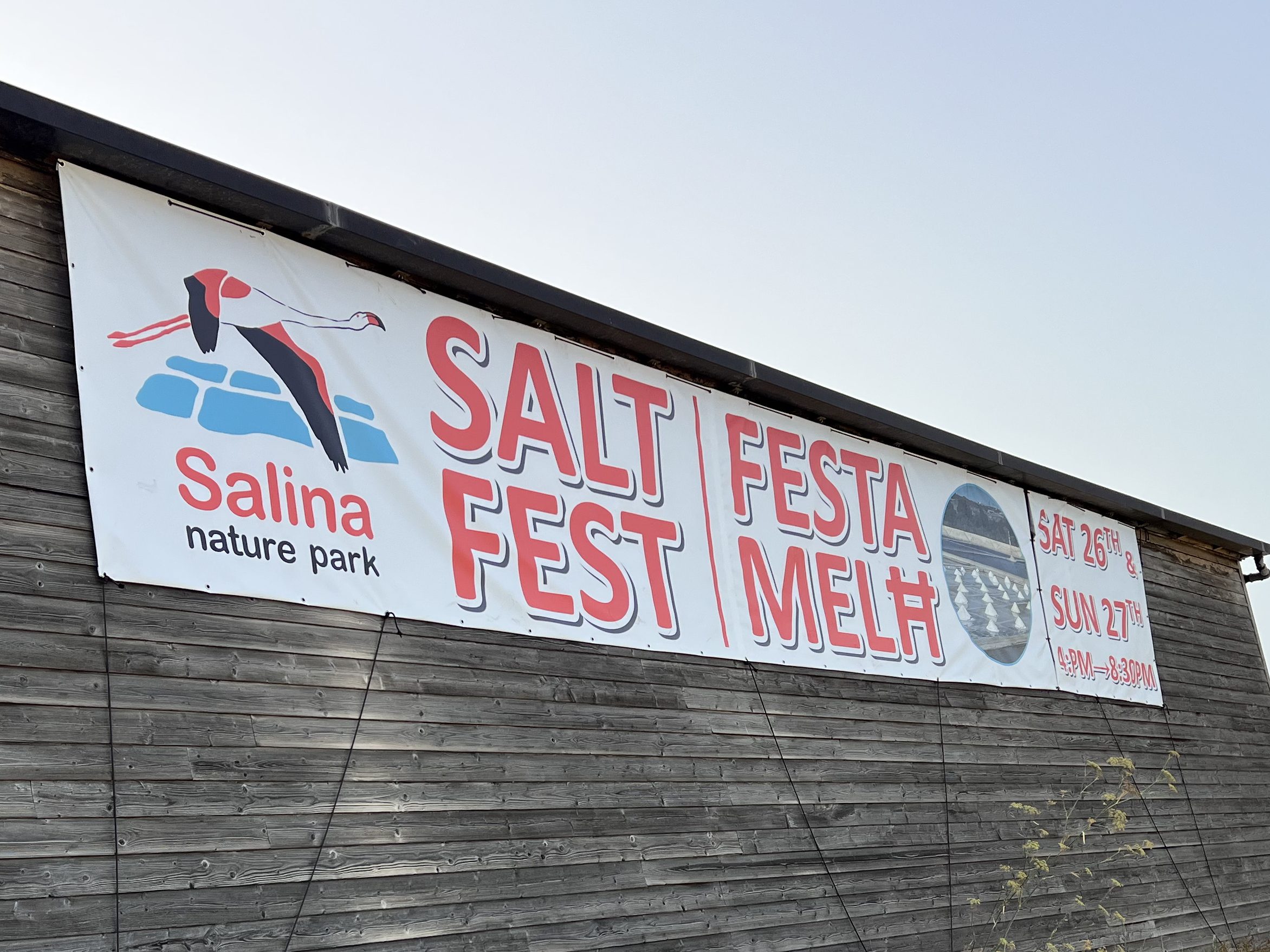
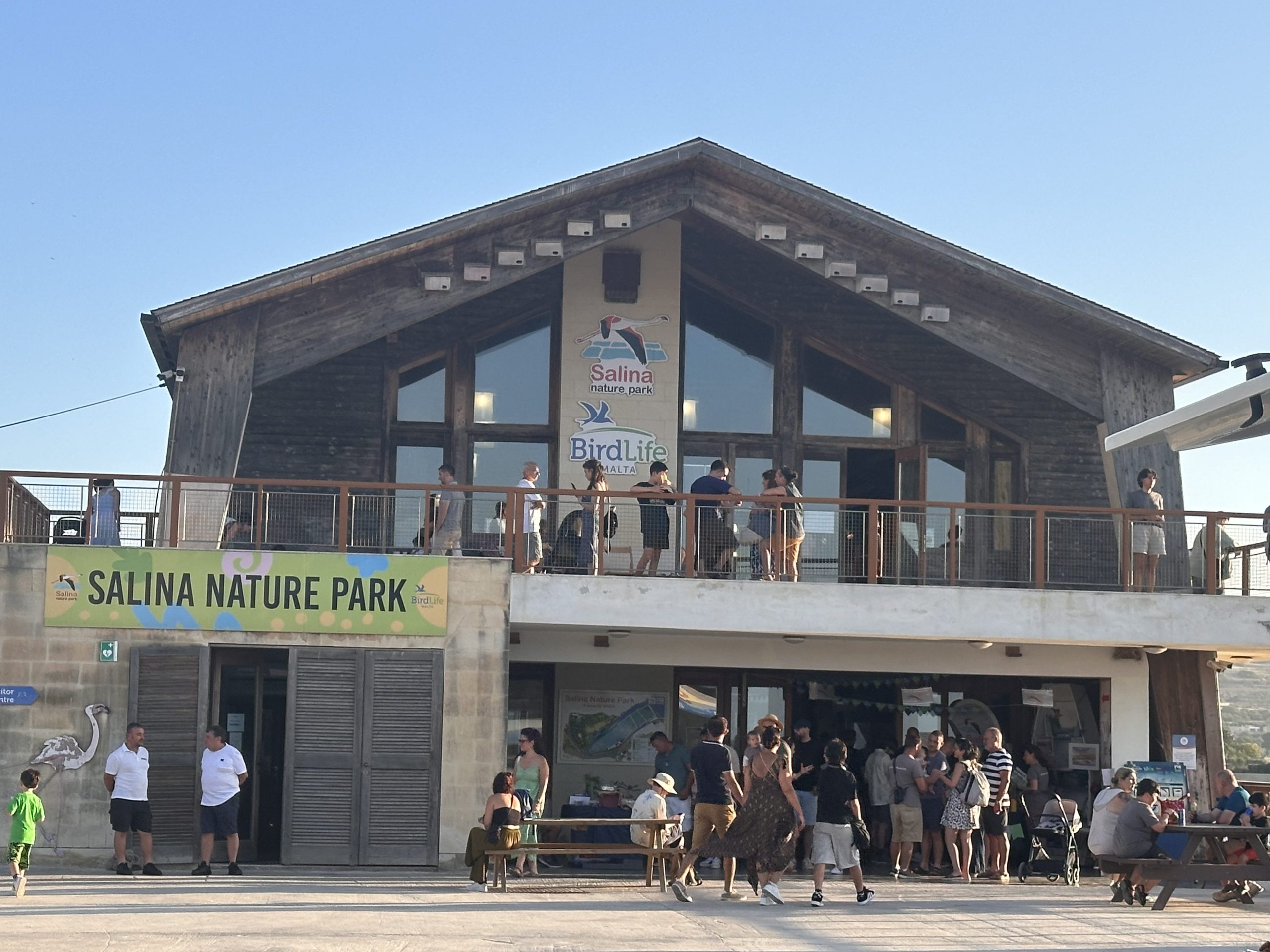
Għadira Nature Reserve
Sightings
Southbound migration of waders was evident with several Green, Wood and Common Sandpipers recorded almost daily. We also noted Curlew Sandpipers, Dunlins and Common Greenshanks on a number of occasions. At the beginning of the month, a Spotted Redshank ad a Yellow Wagtail visited our reserve. Later on, we spotted a Marsh Sandpiper, followed by an Hoopoe some days later. A couple of Common Reed-warblers was noted multiple times, as well as a few Swallows. On 30th July we also ringed a male Ruff.
A family of Black-winged Stilts stayed all month and its three juveniles were flying strongly by the end of the month, ready for their first migration. Two pairs of Little Ringed Plovers were noted with their chicks as well!
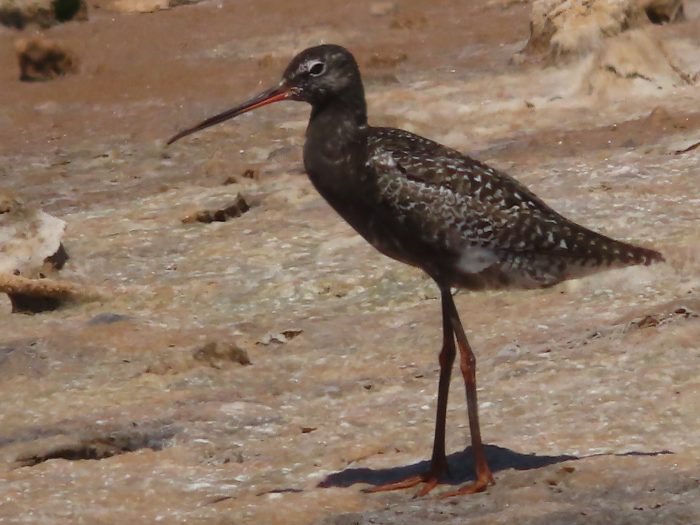
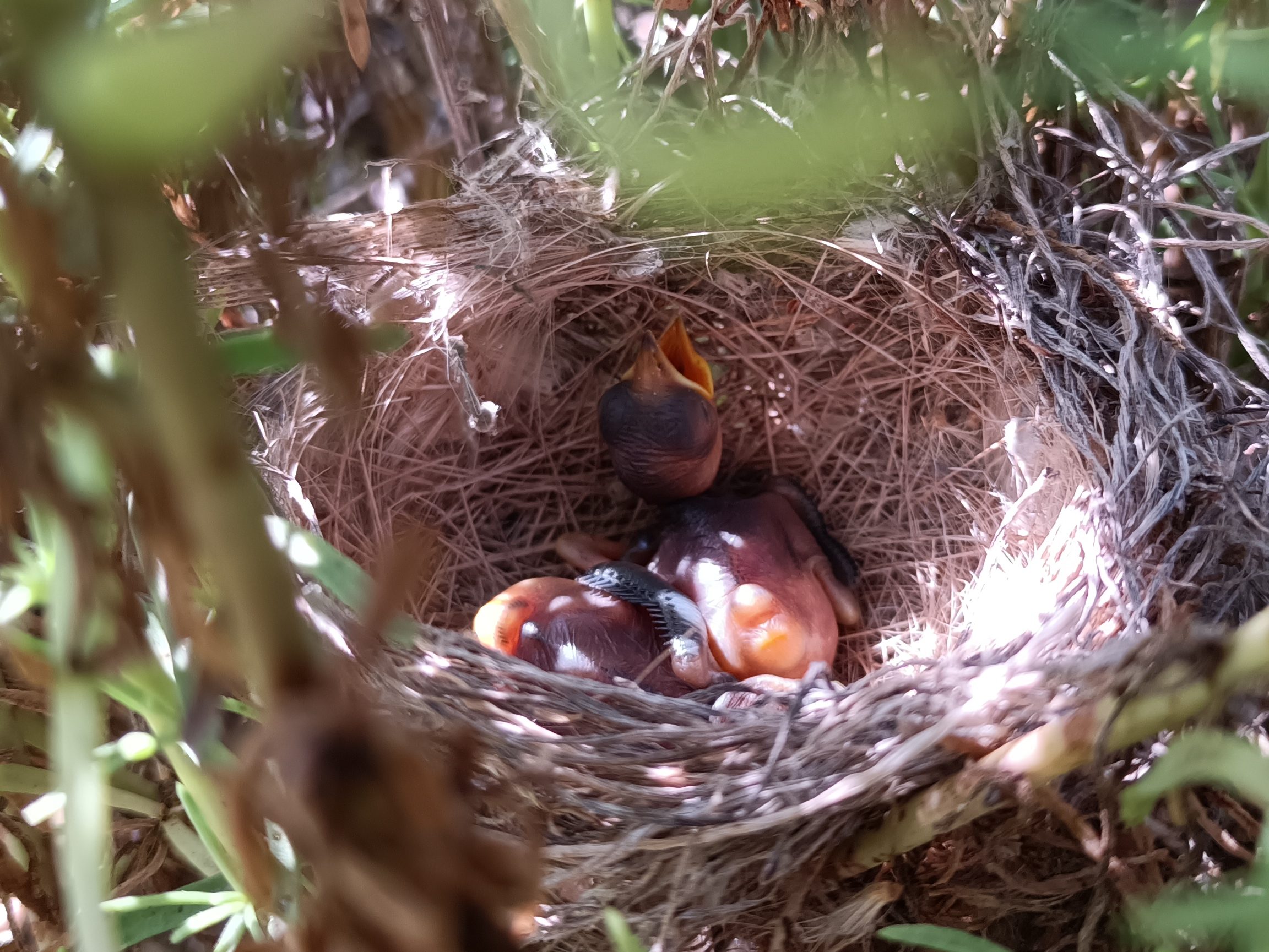
Works
At the beginning of the month, BirdLife volunteers and a group from Bank of Valletta joined our staff to help control the invasive Giant Reed (Arundo donax) and African Boxthorn (Lycium ferocissimum) on the seaward side of the reserve. We shredded all the material and we used it to mulch the main path in the reserve.
We carried on our Giant Sand Cricket survey on a weekly basis, with a peak of 56 active burrows noted in the first week of July.
During the month, new security cameras were also installed for better security at the reserve.
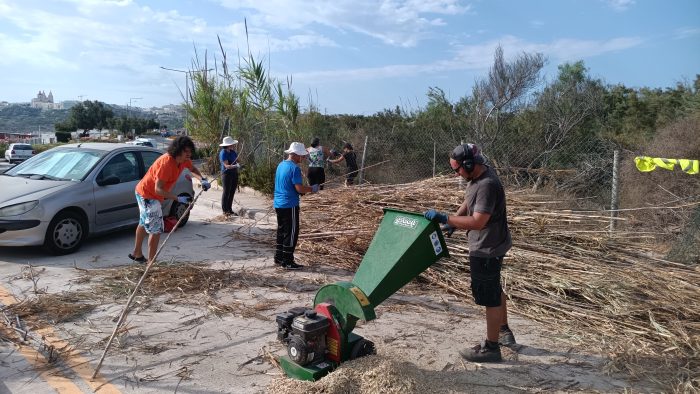
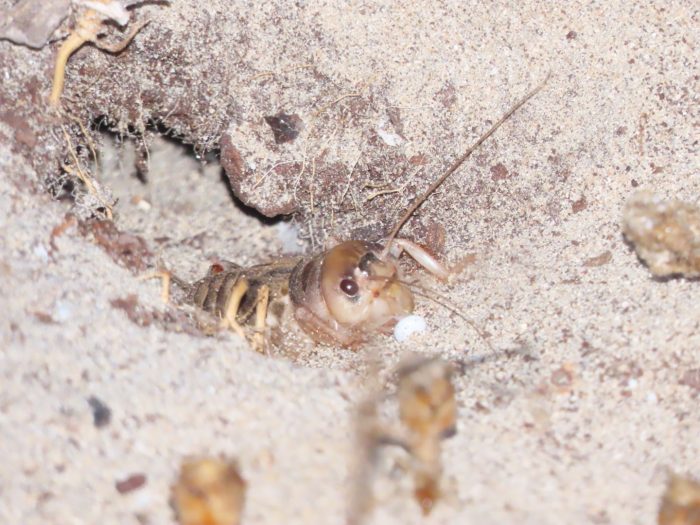
Simar Nature Reserve
Sightings
Despite being in peak summer, the wetland becomes lush with flourishing brackish vegetation. This is mainly due to the increase in intense sunlight, warmer water temperatures, higher salt levels and increase in nutrients. Such plants include the Twiggy Glasswort, Smooth leaved Saltwort, Golden Samphire, Mediterranean Bindweed and Tamarix. Most of these plants are rare in the Maltese Islands, so we carry out a habitat management plan to stabilise and increase their populations within the reserve. In recent years the Tassel Pondweed has grown vigorously, spreading almost all over the water surface. The Common Reed also continued to expand and create larger reedbeds. This has attracted several migratory birds to feed and rest but also to breed!
A pair of Reed-warblers has finally returned to Simar to nest. They once were common breeding birds at the reserve but they hadn’t nest here for several years. This was mainly due to a decrease in the Common Reeds in recent years. However, with the latest expansion of reedbeds, our reserve once again provides a suitable habitat for their nesting. They successfully raised four young birds. Several Common Moorhen also bred amongst the reeds.
Wader migration was evident throughout the month. Common Sandpipers were the most frequent. Scientific research – carried out in the reserve through bird ringing – has shown that individuals of this species return every year in the summer, on their way to Africa. This year we already had three birds returning to Simar, after being ringed in 2019, 2022 and 2024. Other wader species spent some time here, including Little Stints, Little Ringed Plovers, Green Sandpipers and Wood Sandpipers.
Three Great White Egrets were seen in the reserve this month. This was definitely an unexpected sight since these birds are usually seen in autumn. Other herons present in the reserve throughout the month included a few Black-crowned Night-herons, occasional Little Egrets and a few Grey Herons. Another interesting sight was that of an adult European Honey-buzzard, flying over to roost in a nearby woodland.
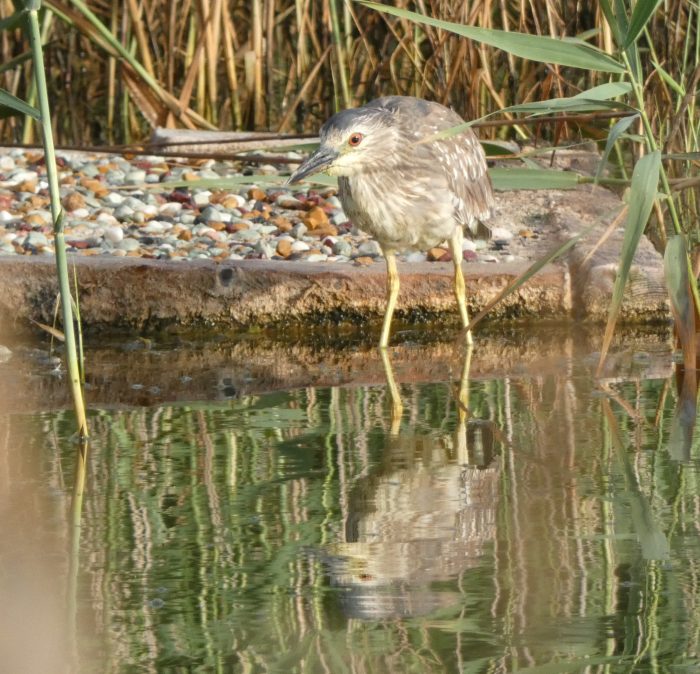
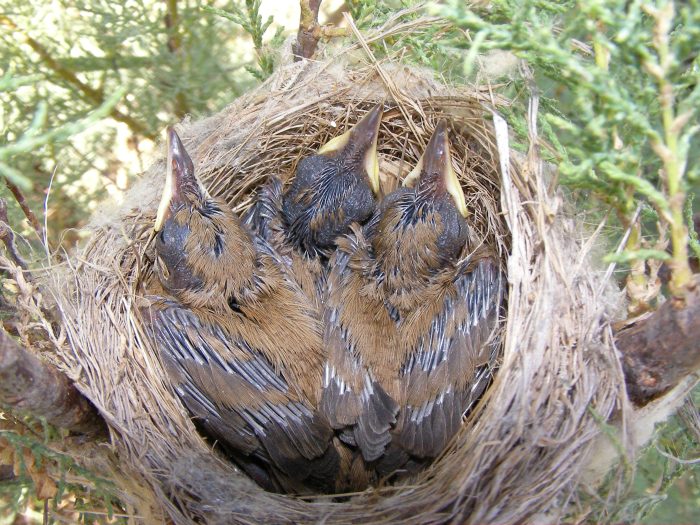
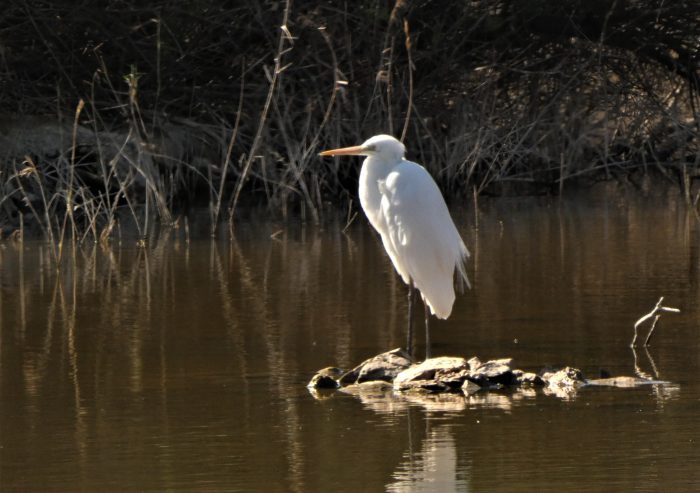
Works
We started to work on the new viewing wooden hide close to the visitor centre. A lot of soil was excavated to improve the area and create a new shoreline to attract waders and herons. We then used the soil to complete a new walking path that will lead to the visitor centre and to the new viewing hide. The replaced old path will be retained as an area suitable for breeding birds, reptiles and insects. By using rubble stones, timber and larger branches from pruned trees, we also built low retaining walls in the new path.
We carried out habitat management on each island in the wetland. We cleared specific shorelines from growing reeds to expose mud and encourage a more diverse growth of halophytic plants. This work can be done mostly in summer, due to lower levels of water. We also carried out extensive works on the island closest to the new viewing hide, in direct view of the visitor centre. By manually excavating and removing the top soil layer, we increased the area of low lying water to create mudflats. We then used that soil to create another extensive mudflat. We dug internal canals to connect opposite shorelines when higher water levels reach them. We deposited the pruned branches from the tamarix trees of the island in the water, thus creating a twig island.
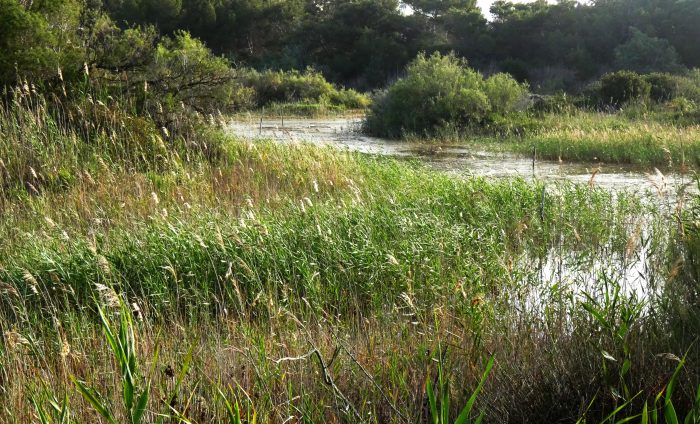
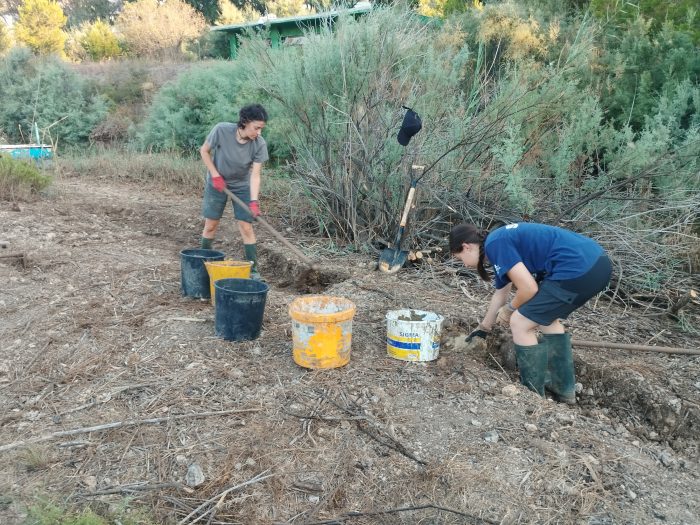
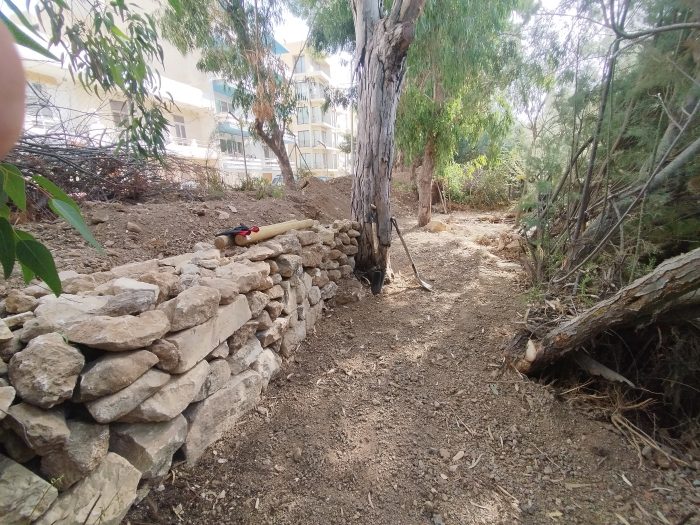
Foresta 2000
Sightings
Last month brought intense summer heat at Foresta 2000, but also fascinating wildlife sightings and important conservation work. Despite the dry conditions, life in the reserve remains active, adapting to the Mediterranean summer. The African Wolfbane – or Siġra tal-ħarir in Maltese – is producing it’s silky threads.
A special night monitoring session revealed some of the more secretive residents of the reserve. Among them was the Hogna radiata, a large species of wolf spider known for its wandering, nocturnal hunting behaviour. This impressive spider preys on small insects. During the same night, we also observed several chameleons.
Earlier in the month, we spotted a weasel moving quickly through the undergrowth. Blue Rock-thrushes continue to be active around the cliffs. Summer residents such as Sardinian Warblers, Zitting Cisticolas, and various butterflies – including Painted Ladies – added to the season’s lively atmosphere.
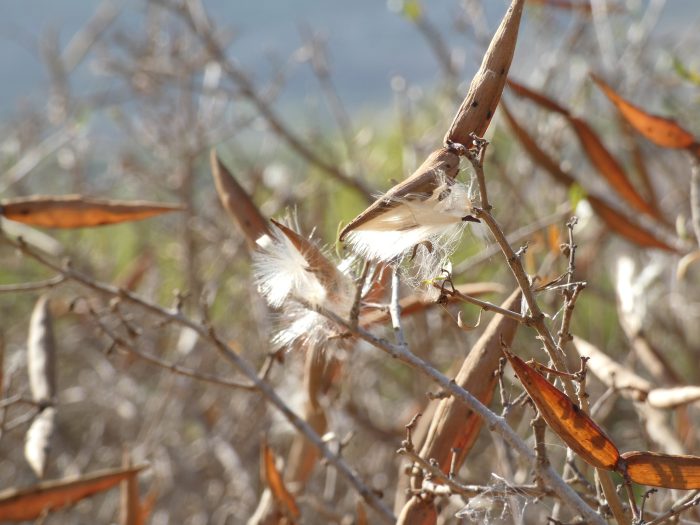
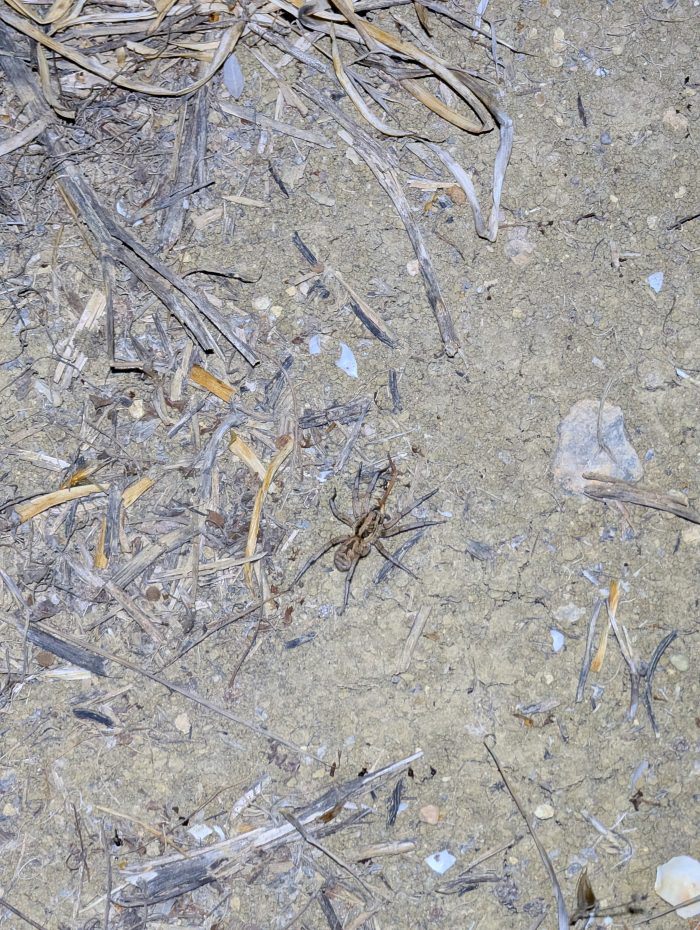
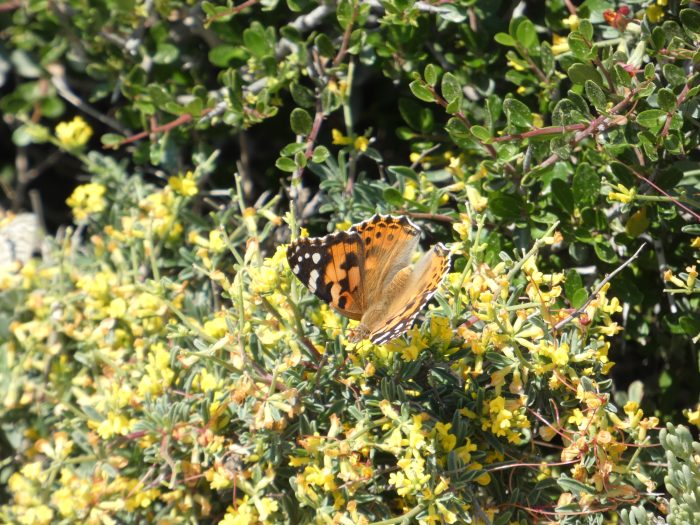
Works
Routine clean-ups and trail maintenance continued throughout the month. New signage and trail markings were updated to improve our visitor’s experience and guide them for a responsible exploration of the reserve.
During one of the patrols, we unfortunately discovered illegal dumping sites in the area. One case involved the remains of protected bird species, which were immediately reported to the relevant authorities for investigation. These acts pose a real threat to wildlife and to the environment, and they highlight the need for continued vigilance and community support.
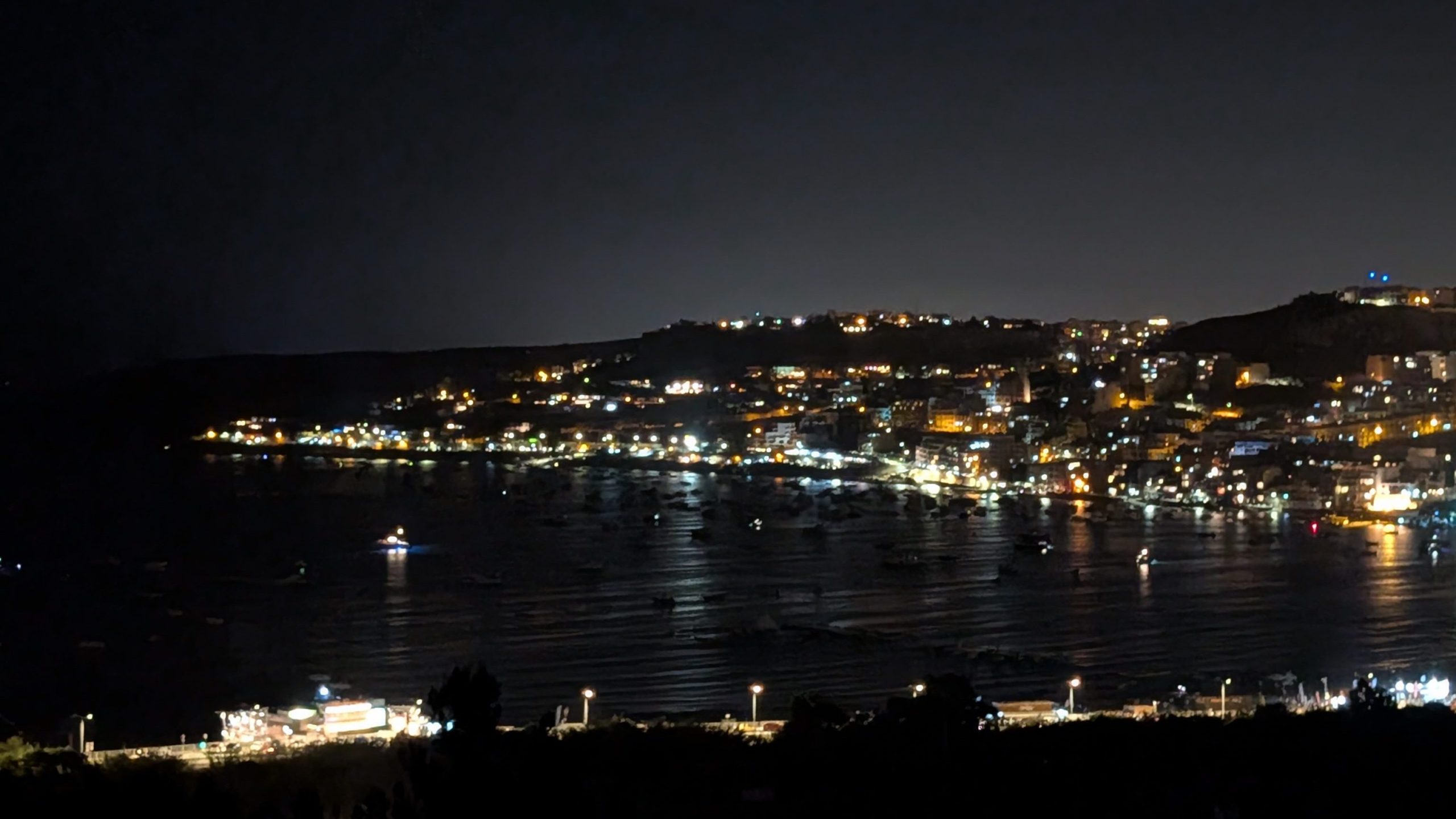

Waders on the Move!
This is one of the quietest months in Malta’s birding calendar. It generally marks the winding down of the breeding season for most of our species, as well as the start of autumn migration for a few others.
As usual, the most conspicuous early migrants towards the end of the month were waders. Consecutive days with strong north-westerly winds seemed to bring an influx of these birds. The first Curlew Sandpipers, Dunlins, and Little Stints of the autumn showed up, together with other waders.
Among them, we spotted a Kentish Plover that spent multiple days at Marsaskala at the end of the month. This species is very scarce in Malta, with usually less than a handful of sightings each year. It tends to occur mostly on rocky coasts in Malta, although this is probably a consequence of the local lack of its favoured habitat – sandy beaches and mudflats. Despite its English name, this species does not regularly appear in Britain anymore. Nevertheless, this species is widespread in large areas of Europe, Asia and Africa.
In these days, many birders look forward to see flocks of Eurasian Oystercatchers migrating along Malta’s coasts. Although they are very common in northern Europe, they are quite scarce in Malta, with usually just a handful of sightings every year. These occur mostly from July to early September, and rarely in March.
Eurasian Oystercatchers are very distinctive birds, with a black and white plumage and a long bright orange bill. The latter feature has earned it the nickname of “carrot-bill” by birders. On 27th July, a flock of eight birds was seen near l-Għadira s-Safra. Unfortunately, due to the high degree of disturbance along Malta’s coasts in summer, these birds seldom settle and linger for long.
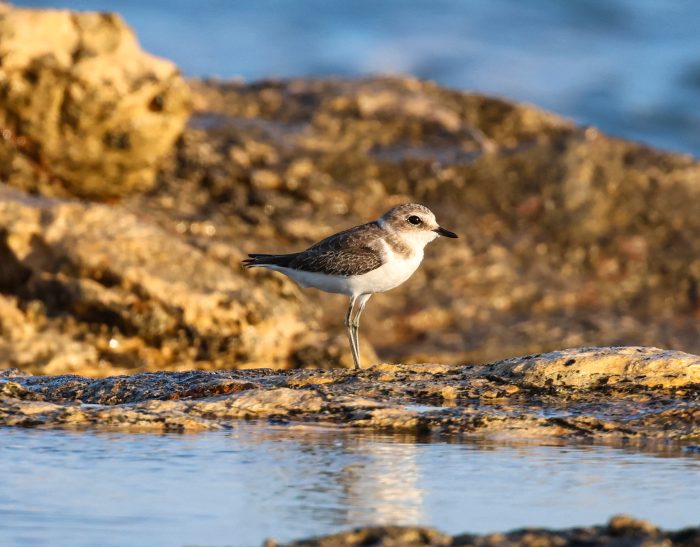
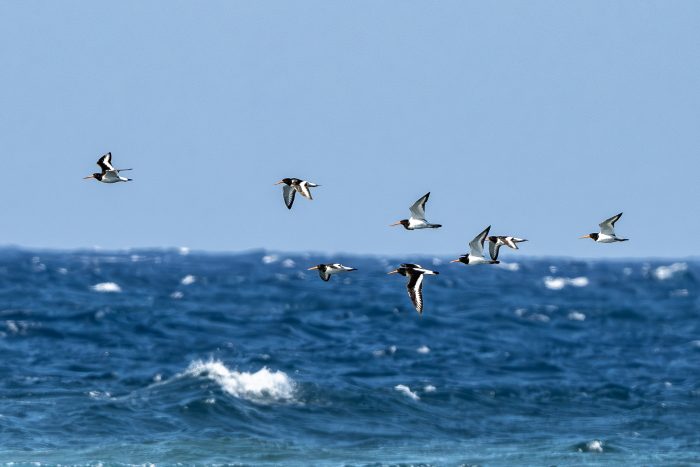

STEM and VET Curriculum Hub
As part of the Tween4STEAM summer camp organized by the STEM and VET Curriculum Hub, we introduced students to the fascinating world of birds, aiming to inspire a deeper appreciation for nature.
The children explored the work of BirdLife Malta, uncovering the many ways in which we help protecting Maltese birds and wildlife. They also actively participated in interactive games that highlighted the incredible adaptations and lifestyles of birds – as well as the bird ringing process and its scientific importance.
It was a truly an enriching morning for the students, and a heart-warming one for us. Witnessing curiosity and passion unfold in such moments is always the greatest reward!
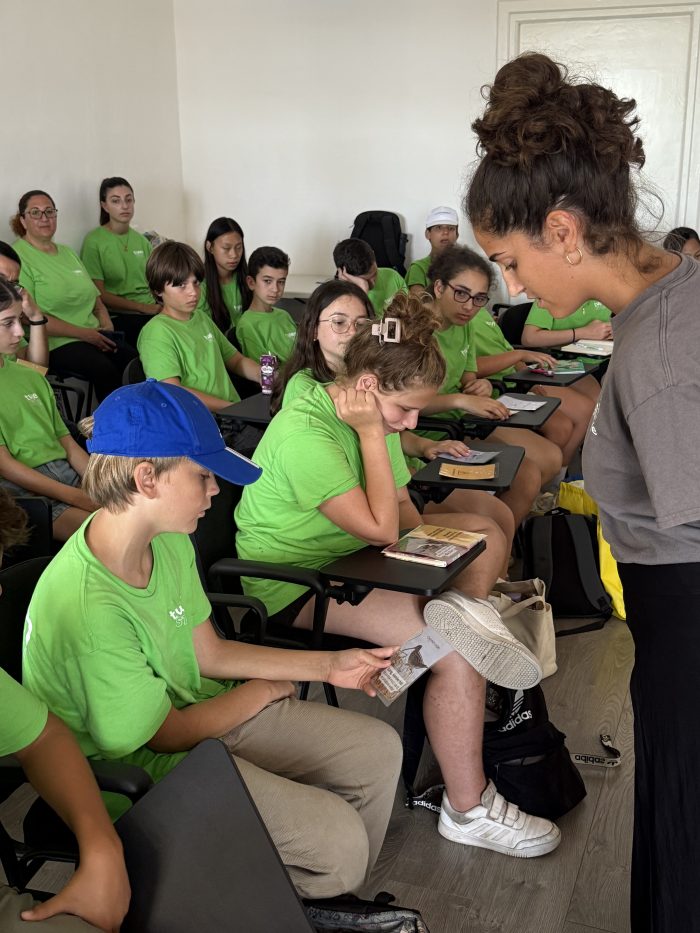
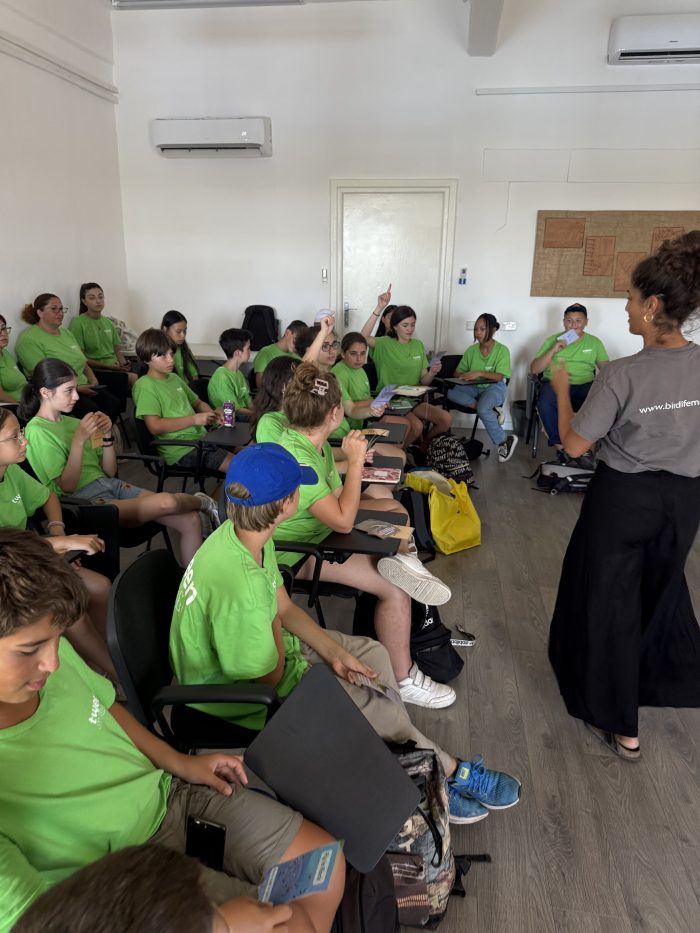
House Martins breeding colony and Scopoli’s Shearwater Walk
This month, with our Young Birders Club, we enjoyed a evening at the industrial area of Ħal Far. Surprised? So were the families that joined us! Nature always finds a way to reclaim its space, and a number of House Martins have found a perfect place to nest there. It is the first time we are observing these special birds nesting in such numbers in Malta!
Afterwards, we headed to the cliffs. Here we looked at the stars with the Astronomical Society of Malta and Light Pollution Awareness Group. We also observed Scopoli’s Shearwaters, as they circled and called beneath the cliffs while returning to their nests. Finally, we had the chance to witness the ringing of one of these birds by our Seabirds Team, as part of their ongoing research!
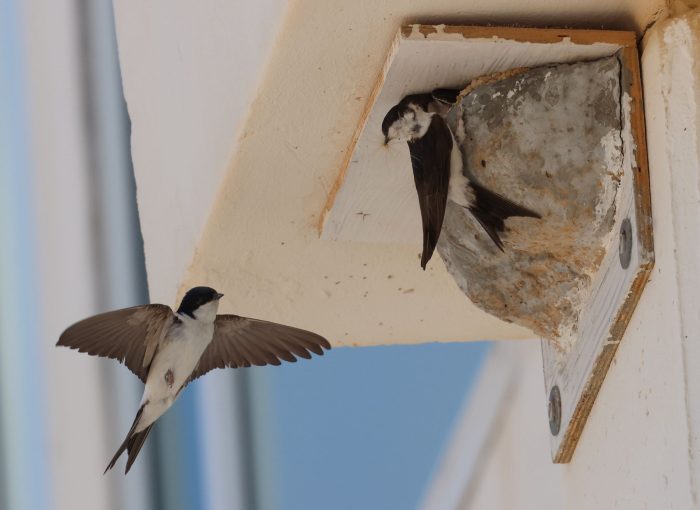
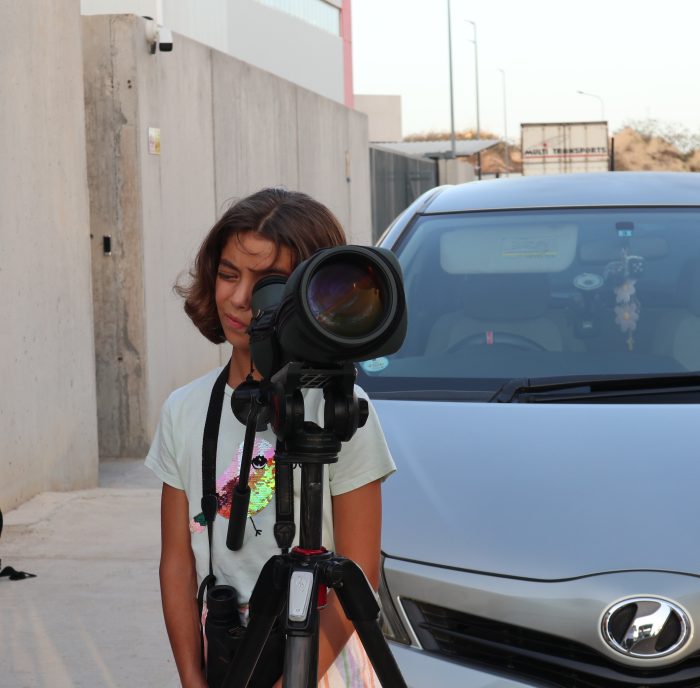
Salt Festival 2025
We spent the last weekend of July at Salina Nature Reserve, organizing and enjoying the 2025 edition of Salt Fest.
These two days were full of excitement and packed with activities. We had a high turnout on both days and strong interest from the public – leading to new memberships and volunteering applications!
The salt pans tours were in high demand – fully booked for almost every slot – as guests were eager to discover the history and process behind salt harvesting. They even had an opportunity to try the salt harvesting experience themselves, an activity that was especially popular among our younger guests.
It made us happy to see so many children present at our festival. We also had fun interacting with other participants and engaging with their stands. Overall, the atmosphere was cheerful, and the event was a great success!
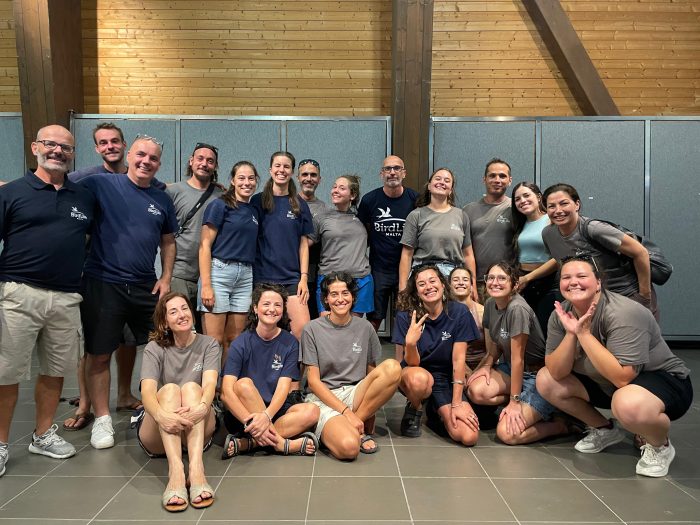
Credits
Text: David Attard, Justine Borg, Charles Coleiro, Francesco Dal Colle, Pamela Jorgo, Giada Lampitelli, Sofia Meskhidze, Stefano Miceli, Sara Pontrelli, Manya Russo, Vera Tokmakova
Photographs: Camilla Bianco, Charles Coleiro, Ricardo Fernandes, Kevin Gambin, Nicholas Galea, Mario V. Gauci, Shaun Isherwood, Antonia Micallef, Aron Tanti, Ev Watson, BirdLife Malta
Editing: Nadia Sodano
